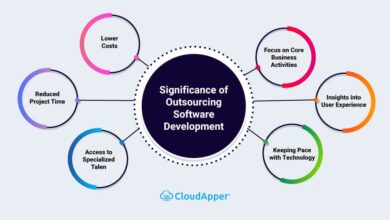Metrics, KPIs, and OKRs: The Triad for Business Success

In today’s competitive landscape, businesses always look for better ways to track progress and ensure long-term growth. Three essential tools—Metrics, KPIs, and OKRs—are vital in helping businesses of all sizes succeed. But what exactly are these tools, and how can they work together to supercharge your business strategy? Let’s dive into the details.
Defining Metrics, KPIs, and OKRs
What Are Metrics?
Metrics are quantifiable measures used to track specific processes or performance areas within a business. These could range from website traffic to sales numbers, customer satisfaction, or employee performance. In essence, metrics help you assess the day-to-day activities that drive your business.
What Are KPIs (Key Performance Indicators)?
KPIs are a specialized subset of metrics. They are directly linked to strategic goals and objectives, clarifying whether a company is on the right path. For example, if your goal is to increase revenue by 20% this year, a relevant KPI might be the monthly revenue growth rate.
What Are OKRs (Objectives and Key Results)?
OKRs are a goal-setting framework that helps companies define clear objectives and the key results needed to achieve them. Objectives are broad, qualitative goals, while Key Results are the specific, measurable actions that lead to achieving these objectives. OKRs encourage ambition and innovation, pushing teams to aim higher.
The Importance of Metrics in Business
Types of Metrics
Metrics come in various forms, and different metrics suit different business needs:
- Operational Metrics: These measure day-to-day business functions, such as production rates or employee efficiency.
- Financial Metrics: Tracking revenue, profits, and expenses helps ensure that financial goals are being met.
- Customer Metrics: Metrics like customer retention rate or Net Promoter Score (NPS) focus on customer satisfaction and loyalty.
Why Metrics Matter
Metrics give businesses a way to measure performance in specific areas, providing actionable insights. Without them, it’s challenging to identify weaknesses or capitalize on strengths.
KPIs as Strategic Tools for Success
Characteristics of Effective KPIs
Good KPIs are:
- Specific and Relevant: They should be tied directly to your business’s goals.
- Measurable: Clear data points must be available for tracking.
- Time-Bound: KPIs need a clear timeframe to monitor progress, like monthly or quarterly.
- Actionable: They should inspire action, not just observation.
Aligning KPIs with Business Goals
Aligning KPIs with broader business objectives ensures that the company is always moving in the right direction. For instance, if a company’s goal is to enhance customer satisfaction, relevant KPIs could include the percentage of repeat customers or survey-based satisfaction scores.
Examples of Common KPIs
Some examples of key KPIs that businesses track include:
- Customer Acquisition Cost (CAC)
- Monthly Recurring Revenue (MRR)
- Churn Rate
- Employee Turnover Rate
Understanding OKRs and Their Role in Business Growth
Key Components of OKRs
An OKR framework is divided into two main parts:
- Objective: What you want to achieve (broad and inspiring).
- Key Results: The measurable steps required to achieve the objective.
How OKRs Drive Innovation
Unlike traditional goal-setting techniques, OKRs encourage ambition. They are designed to stretch teams beyond their comfort zones, fostering an innovative culture. This is crucial in industries where rapid adaptation is needed.
Real-World Examples of OKRs
One example could be:
- Objective: Launch a new product line.
- Key Results:
- Conduct market research on customer needs.
- Create a prototype within three months.
- Achieve a 10% increase in sales from the new product line within six months.
Comparing Metrics, KPIs, and OKRs
The Difference Between Metrics and KPIs
While all KPIs are metrics, not all metrics are KPIs. Metrics track everyday business operations, while KPIs are directly linked to specific business objectives.
KPIs vs. OKRs
KPIs focus on performance relative to set goals, whereas OKRs push teams to exceed expectations. OKRs are more flexible, encouraging teams to set higher targets and embrace innovation.
How to Integrate Metrics, KPIs, and OKRs into Business Strategy
Step-by-Step Guide to Implementing These Tools
- Define Business Goals: Start by clearly defining long-term objectives.
- Choose Relevant KPIs: Align KPIs with these goals to measure progress.
- Set Ambitious OKRs: Use OKRs to push your team to aim higher.
- Track Metrics Consistently: Regularly monitor operational and performance metrics.
Common Challenges in Using Metrics, KPIs, and OKRs
Overcoming Analysis Paralysis
With so much data available, it’s easy to get overwhelmed. Focus on the most critical metrics and KPIs to avoid over-analysis and stay on track.
Staying Flexible and Adaptive
Business environments change, and so should your metrics, KPIs, and OKRs. Regular reviews ensure they remain aligned with evolving objectives.
Best Practices for Measuring Business Success
- Regular Reviews: Weekly or monthly assessments of metrics, KPIs, and OKRs can help keep teams aligned and focused.
- Employee Involvement: Make sure teams understand how their work contributes to broader goals.
- Technology Integration: Use software tools to streamline the tracking and reporting process.
Conclusion
Metrics, KPIs, and OKRs form the triad that drives business success. Each plays a distinct role, yet together they offer a holistic approach to goal-setting, tracking progress, and ensuring growth. By integrating these tools into your business strategy, you can unlock new levels of performance and innovation.
FAQs
What’s the difference between KPIs and metrics?
Metrics measure everyday business activities, while KPIs are tied to specific, strategic objectives.
How often should OKRs be reviewed?
OKRs are usually reviewed quarterly, though some businesses may choose monthly reviews depending on their pace of operations.
Can small businesses benefit from using OKRs?
Absolutely. OKRs help small businesses set ambitious goals and align their teams toward achieving them.
What are some examples of good KPIs?
Good KPIs include Customer Acquisition Cost (CAC), Monthly Recurring Revenue (MRR), and Churn Rate, among others.
How do metrics, KPIs, and OKRs improve business efficiency?
They provide clear performance insights, helping businesses adjust their strategies, enhance productivity, and foster innovation.



